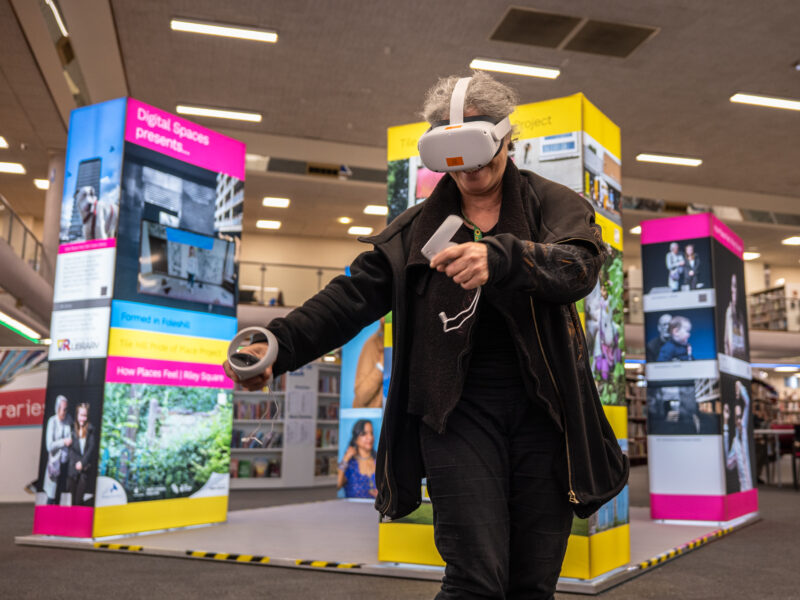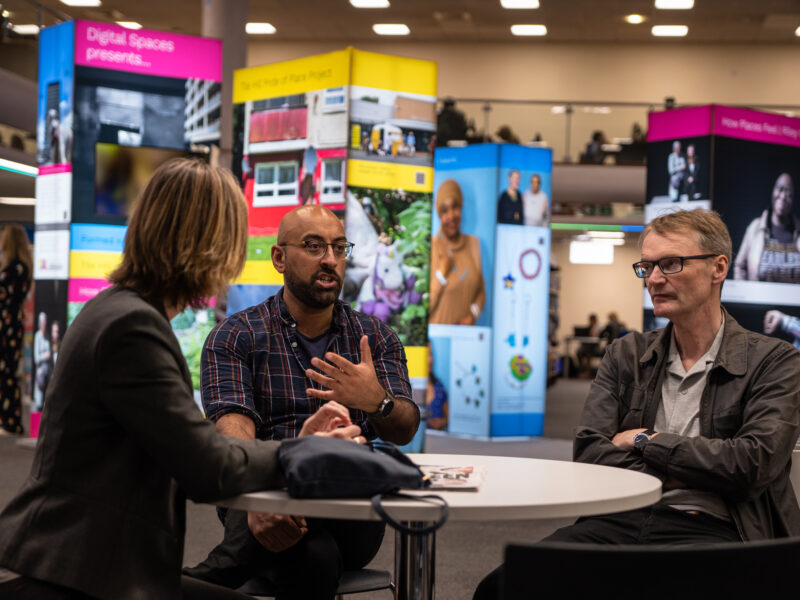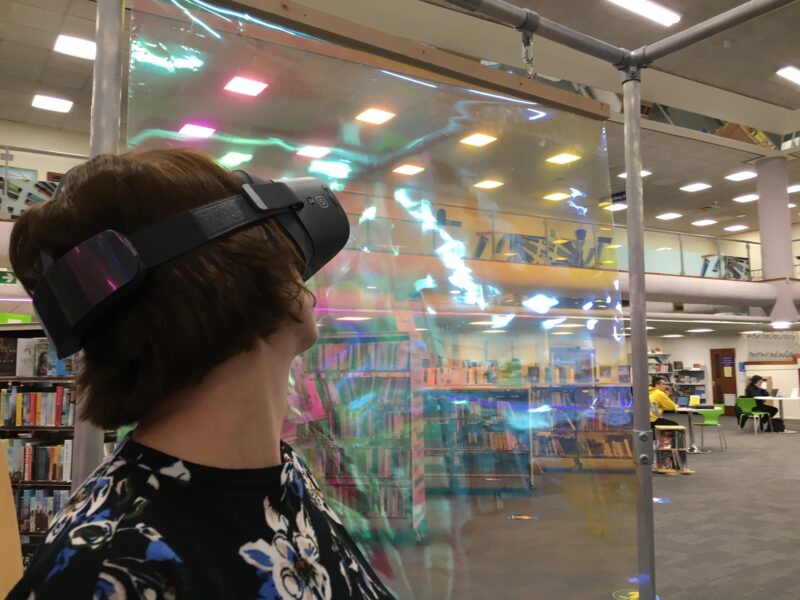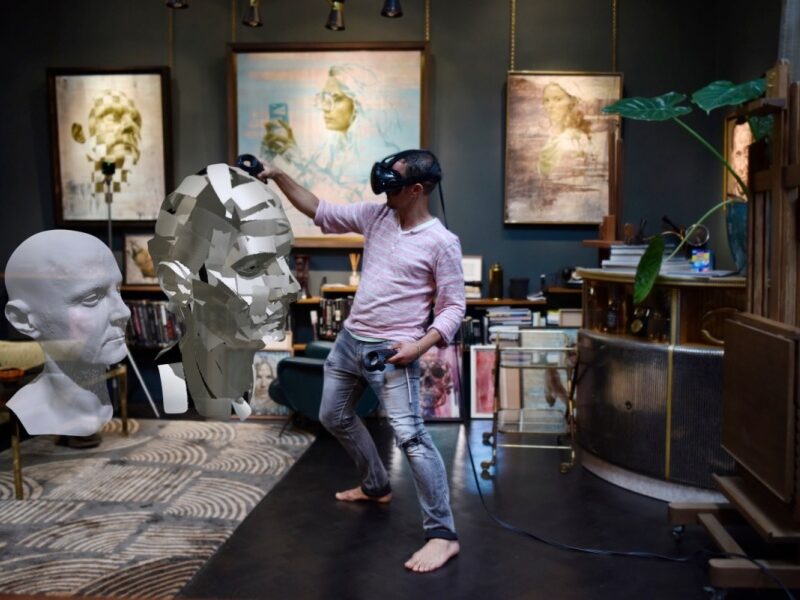Libraries are brilliant places to introduce VR to new audiences. They offer safe, intimate spaces and attract people who are often already curious and open to learning.
For the Digital Spaces project at Coventry Libraries we worked with VR expert Zillah Watson to create a well-organised and enjoyable experience for library users. Here we share our recommendations.

Offer content with wide appeal
Our experience shows that audiences gravitate towards adventures and memorable immersive experiences, where the VR creates an opportunity to explore a new world, or explore from a new viewpoint. From David Attenborough’s Micro-beasts to an intrepid summitting of Mount Everest, we kept our content varied, and chose films that would appeal to a wide audience.
Keep it human
Making the experience friendly and personable can remove the ‘impersonal’ aura that sometimes surrounds digital technology. Find staff within the library network who are interested in digital technology and invite them to be part of the in-person experience, where they can pass on their enthusiasm to members of the public. Make sure staff experience the VR films themselves, so they can get users excited about the content. Be sure to check in on the users afterwards – people will often want to talk about their experience, and it’s in these conversations that the value of the project really comes alive. You might also gather insights that can help you improve your offer.
Ensure staff are fully briefed
Have a crib sheet that lays out clearly what staff need to do to before, during and after the VR experience. We’ve shared an example crib sheet here. For instance, charging the headsets, plugging in the headphones, giving instructions to the user, and having the evaluation forms ready. This will help ensure a smooth process and put both staff and visitors at ease.

Encourage group experiences
If resources allow, it’s best to have at least a couple of people involved at any one time – sharing the experience can make people less self-conscious and help them to relax into the immersive world. It also brings people together and opens up the opportunity for conversation afterwards.

Keep it simple
At Coventry Libraries we kept the technical aspect as simple as possible. We replaced handheld controllers (which can be confusing when you’re new to VR) with an app that allows users to make selections by looking at icons within the headset. Keeping the experience streamlined meant all the users’ attention could be focused on the content itself. It made the whole process near-enough failproof.
Get the right furniture
The user will often need to rotate 360 degrees during a VR experience, so we found that simple stools without wheels are best – they allow total freedom of movement, but keep the user grounded! Allow about 3m2 per user, to ensure they don’t bump up against anything.
Provide safe bag storage
It can feel uncomfortable to step out of your environment and immerse yourself in a new world, so helping people feel at ease and safe in the environment is key to a rewarding experience. Offering lockers or another safe storage option for belongings will help users relax and let go of worry.

How useful was this resource?
Further reading


